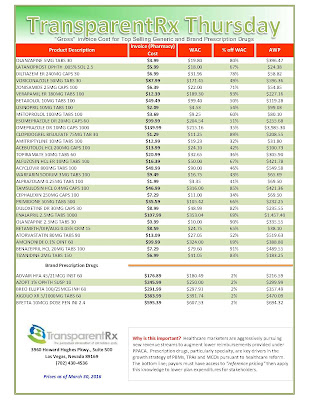 |
| List Price vs. Actual Cost |
That’s according to new analysis from Amundsen Consulting, a division of QuintilesIMS, which found in spite of “robust negotiations between biopharmaceutical companies and payers,” health plans don’t pass along the savings achieved via rebates and discounts on the price of medicines, but instead still require patients with high deductibles or coinsurance to pay up based on the medications’ full list price.
“While biopharmaceutical companies set the list prices for their medicines, it is the health plan that ultimately determines how much a patient pays out-of-pocket,” Stephen J. Ubl, president and chief executive officer of the Pharmaceutical Research and Manufacturers of America (PhRMA), the organization that commissioned the analysis, says in a statement.
Ubl adds, “Even though more than a third of the list price is rebated back to payers and the supply chain, health plans do not pass along these discounts to patients with high deductibles and coinsurance.”
That often results in patients with high deductibles or coinsurance being more likely to stop taking medications as prescribed or even abandoning their prescriptions at the pharmacy. That in turn can expose them to higher risk for trips to the emergency room, otherwise avoidable hospitalizations and resulting poorer health.
According to a report in The American Prospect, the problem is pharmacy benefit managers, who act as middlemen in managing prescription drug benefits for health plans, “contracting with drug manufacturers and pharmacies in a multi-sided market.”
